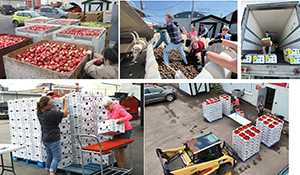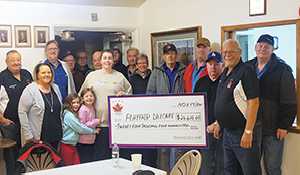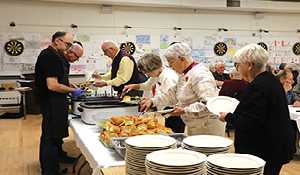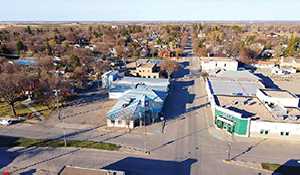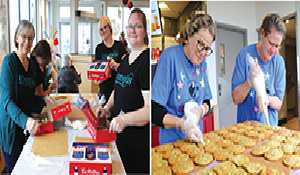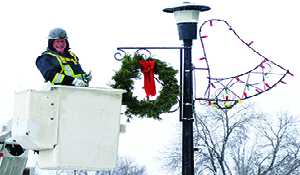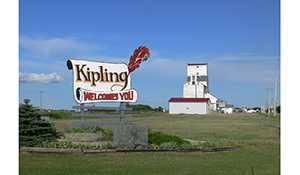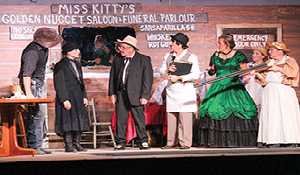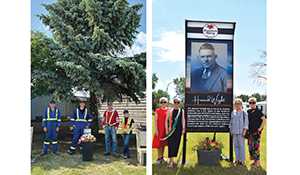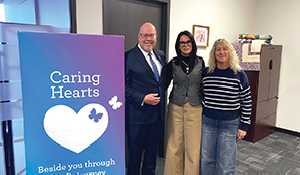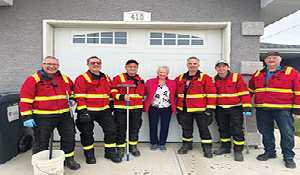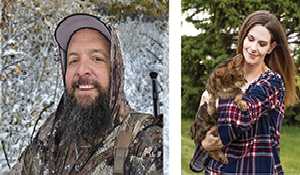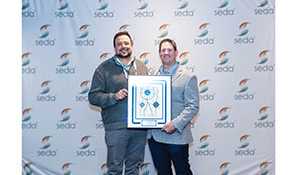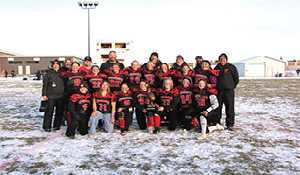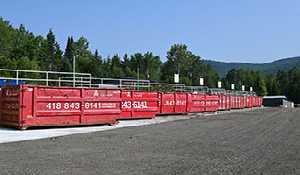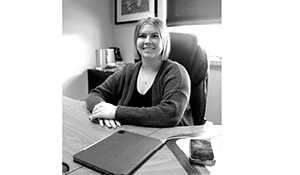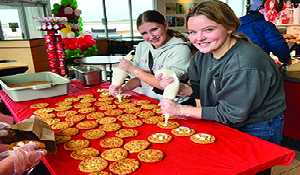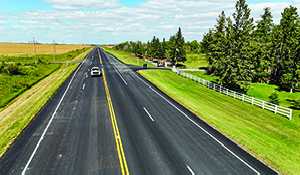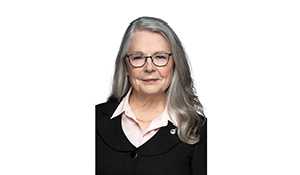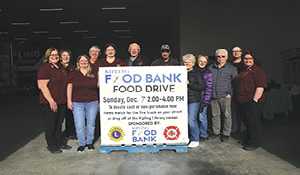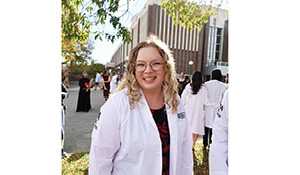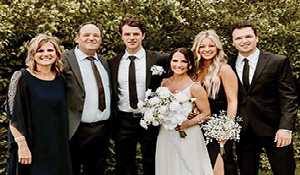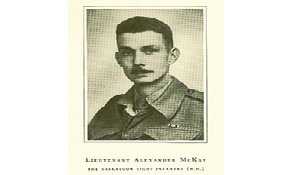Moosomin’s second annual Walk for Alzheimer’s coming up
May 12, 2025, 10:51 am
Ashley Bochek
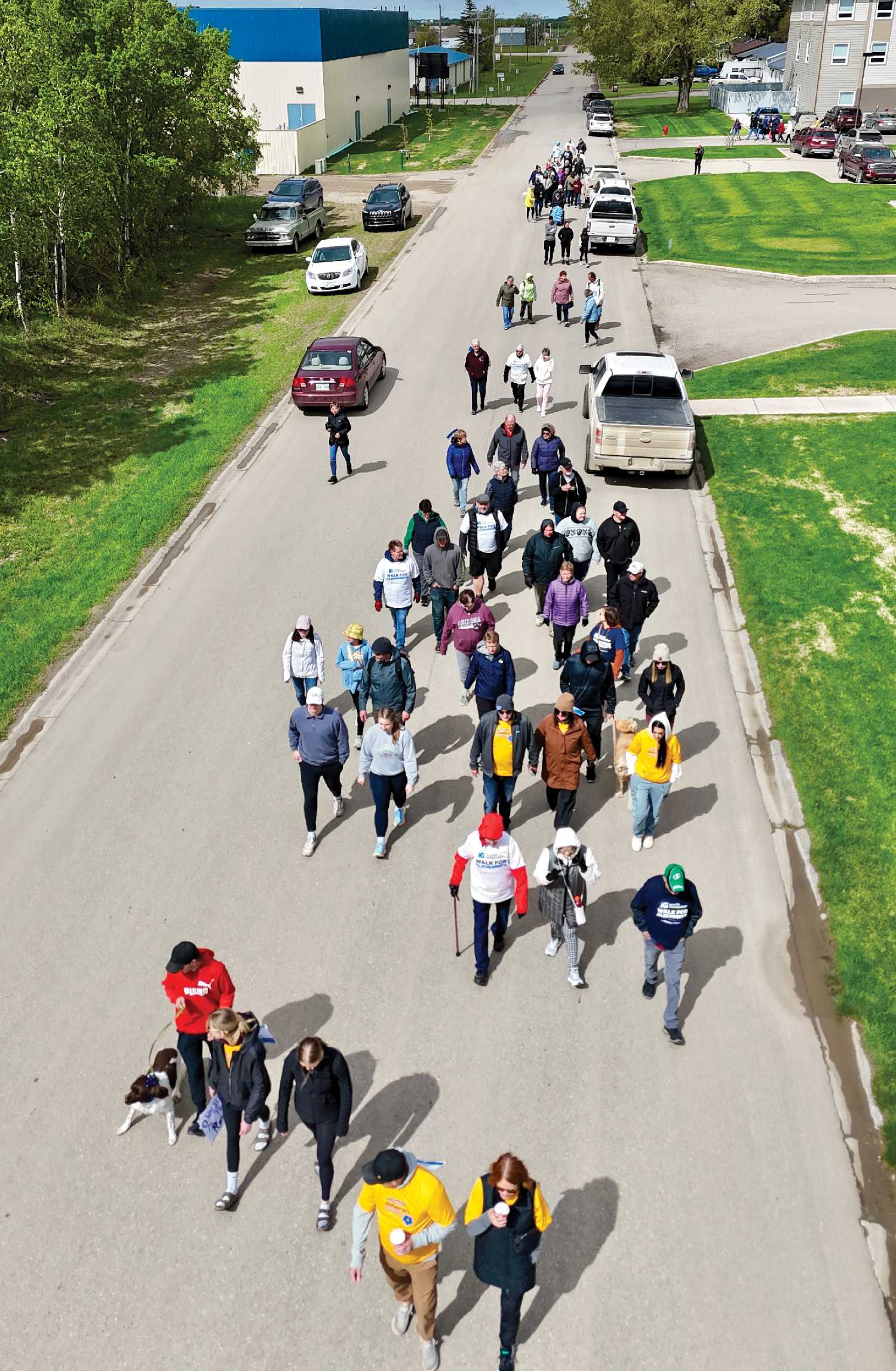

Moosomin is hosting its second annual Walk for Alzheimer’s Saturday, May 24.
Registration will begin at 9:30 in the morning at the Legion, followed by the walk at 10.
This year Moosomin is considered an official in-person walk in Saskatchewan along with Regina, Saskatoon, Swift Current, and Prince Albert.
Bill Thorn, a member of Moosomin Alzheimer’s Society, experienced Alzheimer’s through his wife, Phyllis.
“My wife, Phyllis, had Alzheimer’s and that interested me in getting more involved in the Alzheimer’s Society.
“Seven years ago I joined the support group in town. Last year was our first year we took part in the Alzheimer’s Walk—they called it—Walk-in-a-Box. This year five centres are having a walk across Saskatchewan and Moosomin is one of them. The others are cities like Prince Albert, Swift Current, Regina, and Saskatoon and Moosomin is the only town of the five centres hosting a walk.”
Thorn says the walk is important to his entire family and they take part each year.
“The walk is important to us as a family—getting the community involved and knowledgable about it is important as well.
“It is interesting to hear how many families have been impacted by Alzheimer’s. When Phyllis passed away I couldn’t believe how many people came and told us their connection to Alzheimer’s.
“Unfortunately, there really isn’t a whole lot you can do about preventing it.
At this point they don’t seem to trace it back to hereditary—maybe a little bit—but I can’t help but think that it does run in Phyllis’s family. Her mother, her sister, and her two brothers have all had Alzheimer’s. It certainly seems to run in families. I know Les Gerhardt, his wife’s family went through several members of his family who all had it as well.”
Thorn says the disease is something families need to learn to adapt to.
“You grow into it as the disease starts running its course. It is just day-to-day activities that you just learn of what to expect and what might be down the road—like forgetfulness, less ability to do basic things like preparing meals, writing cheques, counting money, signing her name—she couldn’t sign it on a straight line, but you learn to expect little changes every day. You don’t realize until you look back 5 to 10 years later how change happens a little bit at a time.”
Many years living with Alzheimer’s
Thorn first started seeing signs during golf dates with his wife Phyllis.
“Phyllis started to show signs about 12 years ago. I think the first time I noticed it was when we would golf. She wouldn’t remember her scores and that was never her.
“As it progressed, she was less engaged in conversation when there was a group of us around. You could tell she wasn’t following the conversations. Sometimes when she would want to make a comment it would be after three minutes or so had passed in the conversation. Then, she just withdrew more and more all the time from group conversations. She could follow when it was a few people, but bigger groups—she would laugh when everyone else laughed, but I am not really sure she followed. There were times afterwards that she would ask me—when it was just the two of us—stuff that was already discussed in the conversation hours before as a group.”
He said while the disease impacted Phyllis, it didn’t change her personality as much as it affects some.
“It is funny how you just learn to cope with it. I was pretty fortunate because she was never got angry, she was never stubborn or difficult—she was very easy to deal with and we would go out for walks or go for a drive. It made it fairly easy, and that was more of her personality I think.”
Alzheimer’s tests and trials
Thorn says they travelled to Montreal to join an Alzheimer’s trial after Phyllis’s diagnosis.
“Her first time with Dr. Kerkhoff would have been about 10 years ago, and he gave her a basic cognitive test.
“He would say five words and then two minutes later ask her to repeat those five words and she would have trouble. He also asked her to draw a clock and adjust the hands to 10—there were multiple tests like that one and it showed cognitive signs that she couldn’t follow.
“We took one trip shortly after that to Montreal for a clinic down there. It was two days of tests there, and mostly the result of that was our diet. So we went on this keto diet, but it had side effects—she lost a lot of muscle mass and she just couldn’t do it anymore. We were on it for about a year or so, and I think it maybe helped her a little bit, but at the end of the day she was less mobile, and that made us decide to go off it.”
Thorn says Phyllis struggled to understand her illness.
“She never accepted or understood that she was ill and that was one of the things that always frustrated me. I wish she would’ve because then she could’ve fought a little bit. I remember one morning sitting there and talking about her illness and she said ‘I feel just fine, I am not sick,’ she didn’t understand. In fact, she broke down that day saying ‘I feel just fine, what are you so worried about?’ and I was trying to help her understand that she could no longer drive or cook meals.”
Thorn says everyone experiences Alzheimer’s differently.
“The disease is different with everyone. There is a saying that ‘when you meet someone with Alzheimer’s, you have met one person’ because it isn’t the same with every person. You just learn to live with it.”
Thorn says he learned aspects of living with Alzheimer’s from community members living with a loved one affected by Alzheimer’s.
“My friend’s situation helped me a lot because he became so upset with the system and he was mad at the world because his beautiful wife was less of a partner than they wanted, and I didn’t want to live that way.
“His experience helped me to understand that life has to go on and there is no sense in beating yourself up. I think we handled things fairly well.”
Phyllis moved into Cobblestone House a year and a half before her passing in January.
“It was interesting—after she was in the care home—how many people made comments to me of how I looked more relaxed and I never felt it when I was going through it—I never felt as if I was stressed, but people told me how they noticed a change in my expression and how I walked.”
Thorn explains he comforted himself through their memories together during Phyllis’s illness.
“I always took comfort in the fact that we had a good life together. We had a great time and a lot of fun together. We had good healthy kids. It was just accepting of what we were dealt. I don’t think we could have done anything different with her health.”
Cobblestone opening
Thorn says the new Cobblestone House opening in town was perfect timing for his wife Phyllis and him.
“Cobblestone opening up when it did was perfect for us. Within two weeks of being there she knew that was her home and accepted it.
“Some people don’t want to go back, they want to get out of there, but she was never like that. It was an excellent place for Phyllis, for the year and a half she lived there. The girls and staff there were really good.”
Research into Alzheimer’s
Thorn hopes to see more research published on the disease in the future. “I hope to see more research be published with Alzheimer’s and there has been some, but not a lot,” he said. “They keep saying it is a build-up of impurities in the blood system that causes the cells and veins to not able to move oxygen and blood properly—that is what causes it. It is a lack of oxygen to the brain—some blood veins get clogged in the brain and can cause Alzheimer’s. I keep trying to warn my kids to keep exercising and stay healthy—you know kids though—they think they are bullet proof.”
Last years walk
Thorn says last year’s walk exceeded the group’s expectations raising over $140,000.
“It was an overwhelming walk last year. There were a lot of people there. We were really impressed with the turnout we got and the funds we raised. We had one large contributor, a family friend that was more than overgenerous and really put Moosomin over the top with his donation of $100,000. We were really pleased with the number of people that showed up. We had over 114 people register that day. Three of our family’s closest friends came from Weyburn and some people from Redvers. We didn’t expect that size of crowd there at all and so it was really nice to see. We raised over $140,000 in total. I think it was cool to see Moosomin do so well. There are lots of families within the community who join the walk as well which is just amazing.”
What to expect for 2025 walk
Thorn says the Alzheimer’s Society group never set a fundraising goal, but hopes to see around 100 or more people again this year.
“If we could raise around the $40,000 mark this year that would be great. We never really set a goal, but I think we could hit that mark. We know passing last year’s is unrealistic, but I would like to think we could raise around the $40,000 mark. I hope to get around 100 people in town out walking again this year as well.”
The Thorn family will be participating in the walk again this year in memory of Phyllis.
“My whole family is going to be there. We have special shirts in honour of Phyllis,” Thorn said. “They have asked me to say a few words before the walk—the program is more official this year since we are a more official walk. My role with the Alzheimer’s Society isn’t nearly as big as Claudia and Diane—they have actually attended other meetings and get quite involved with the advisory councils and I know Diane’s family will be there that day as well.”
Alzheimer’s Society Moosomin
Thorn explains the Alzheimer’s Society group meets every month. “We meet once a month at the United Church every second Tuesday of the month in the afternoon for two hours. I know there is an online posting as well.
Confidentiality seems to be important as well, and that is one of the things we remind people when we meet—this is a confidential group. We meet regularly and chat. We also have pamphlets we are going to be giving out at the walk with contact info to let people know of our group.”
Meaning of this year
Thorn says this year the walk will be special in remembering his wife, Phyllis.
“The walk will probably raise some memories of what we went through as a family with Phyllis. Hopefully if people want to talk to us about their family members then I can let them know to give me a call to chat. Sometimes it is easier to chat with some friends than it is to chat to professionals. So if there is a friend out there going through something I would really hope they feel comfortable reaching out.”
Thorn says, “You can’t change it, so learn to accept it and not let it ruin your days. A friend of mine always says, ‘You can’t kick a flat tire, it is still a flat tire at the end of the day’ and thinking about that philosophy there are certain things you have no control over and can’t do anything about. That is what I have learned from our journey. My mom would always say too, ‘Worrying doesn’t solve anything’ and thinking about that—worrying about something what the heck is that going to do. It really doesn’t help you at all.”
Importance of Alzheimer’s Walk
Thorn says the walk is important to raise awareness and to help others speak about their loved ones and ask questions.
“Part of this fundraiser is to continue the work the Alzheimer’s Society does and the research and letting people in the community become aware that there is a disease out there that needs to be looked after as best as we can.
“You can learn a little bit and be prepared, should you have to deal with Alzheimer’s, and know who to talk to if you need help. There are people out there that might be able to help you through a tough situation. That is also so important—to know who to talk to and know you aren’t alone.
“People are that way—people really don’t mind being leaned on. Sometimes people feel they are imposing on your spare time or leisure time, but most people like to be asked. It doesn’t matter if that means helping coach a ball team, helping someone ill, or just helping a neighbour mow their grass because they can’t do it themselves. People don’t mind helping really. Sometimes we think we are imposing on our friends, but in most cases we aren’t and it is nice to help when we can.”
